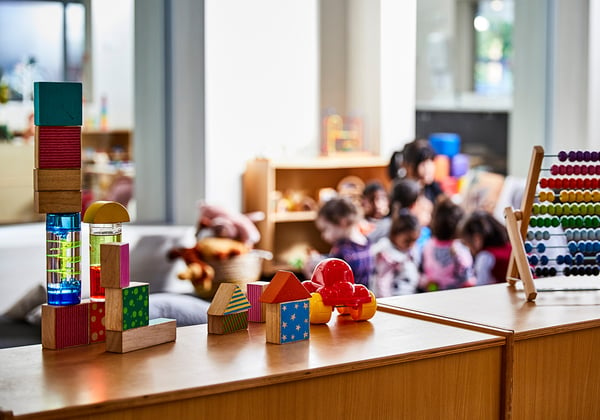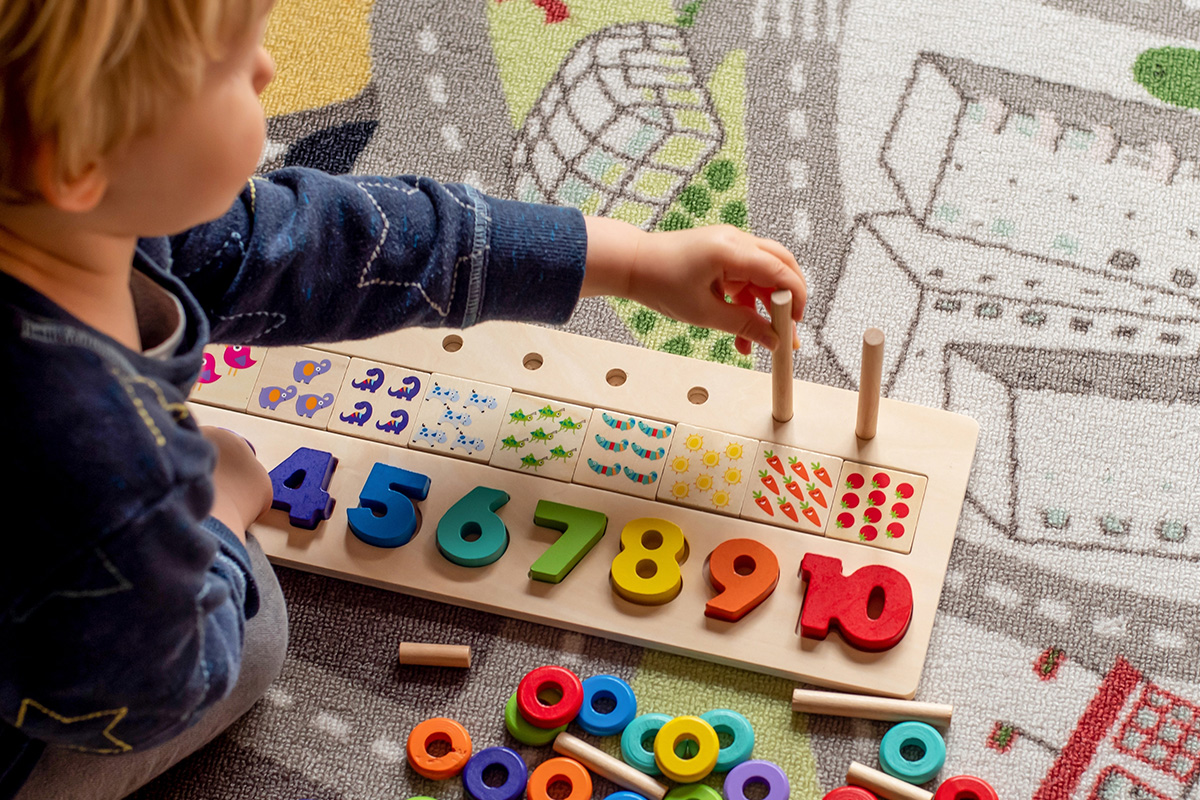Most of us may not remember it, but many likely spent part of our early, pre-school lives in some form of daycare; nearly 75% of children aged five and under are currently enrolled in daycare at least once a week.1
Childcare facilities, especially providers operating out of private residences, are rife with risk. Since home daycares are an attractive option for many families, often costing half the price of larger daycare centers, their prevalence is widespread.2 Insurers need to be aware of the risks involved and ensure they effectively manage these exposures within their book of business.
Home daycare
Home daycare facilities go by many different names: family childcare providers (FCCs), in-home daycares, home-based daycares, neighborhood daycares. Regardless of what we refer to them as, or where they are located, they all provide daytime childcare in homes.3
Facilities which provide home day care are further defined by strict state regulations. In Washington, a basic framework for home day care is offered by the Revised Code of Washington (RCW):4
Family home childcare [refers to] a facility licensed by the Department of Early Learning where childcare is provided for twelve or fewer children in the family living quarters where the licensee resides.
From this definition, we can extrapolate three key elements of home day care:
- Facilities must be licensed in order to operate legally
- Business operations occur at private residences/homes
- Operations may not exceed capacity (no more than twelve children at one time)
Home day care is not the same as commercial childcare. While all forms of childcare require licensing from the state, home day care distinguishes itself by its operation location – private residences – and by it’s size/capacity.
 Home daycare facilities are a popular choice: a 2012 survey showed
Home daycare facilities are a popular choice: a 2012 survey showed
that 29.5% of families rely on home-based child care.5
Related:
How Location-Based Data Improves Property Insurance Underwriting
The licensing process
The Washington State Department of Early Learning (DEL) oversee assessing prospective operators and issuing licenses; in other states, similar departments perform this function. To see licensing bodies and requirements in different states, visit the National Database of Child Care Licensing Regulations.6
According to the DEL, there are several crucial steps in the licensing process, a progression designed to ensure that only the most qualified candidates are approved for a license:7
- Attend a DEL orientation session, roughly seven hours long
- Create and submit a childcare provider business plan, including marketing strategy, equipment requirements, and insurance needs
- Fill out the DEL licensing application and background check forms, complete with references
- Complete mandatory CPR, first aid, and HIV/AIDS/bloodborne pathogen training, alongside TB testing for household members and staff
- Furnish personnel files for all individuals working at the facility
Approved parties are granted an initial license valid for six months. This license allows the DEL to monitor progress and ensure the provider can meet state licensing rules; if rules are met, providers are approved for a full license, valid for three years. Licensees are encouraged to maintain approved standards of operation for the safety and health of the children in their care, as well as the very real threat of reprisal; one complaint could result in probation, denial of license, suspension, civil penalties, or worse.
The licensing process shows that DEL oversight exists, but only to an extent. The day in and day out operation of home day care facilities is not monitored with careful observation; once a provider is approved and attains a full license, DEL monitoring of home day care providers is only mandated to occur once every 18 months compared to the mandatory yearly review of commercial childcare centers.
With the relative lack of oversight, and seemingly boundless chaotic energy of children, home day care facilities are no stranger to risk.
 In spite of a rigorous licensing process,
In spite of a rigorous licensing process,
home daycare facilities are not immune to risk.
Related:
A Hard-To-Spot Risk: Adult Family Homes
What are the risks?
Transport liability
Not all childcare facilities provide transportation (i.e. fieldtrips) for enrolled children. However, for those that do, accidents can and do occur, and child injuries can result in lawsuits. The California Department of Public Health highlights that motor vehicle occupant injuries rank among the leading five causes of death and hospitalization for children under 16 years old.8
Corporal punishment liability
You never know how people are going to handle their anger. Corporal punishment is illegal in most states; one infraction can mean a whole lot of trouble.9
Abuse and molestation liability
More serious than corporal punishment, abuse, neglect, and molestation occur with surprising frequency in childcare settings. In 2017 alone, 2,237 daycare providers were found to be abusing and neglecting children enrolled in their facilities; over 20% of these cases involved sexual abuse.10
Other concerns11
- Unsafe facility environment
- Lack of proper sanitation and other health concerns, including illness transmission and improper food safety
- Insufficient nurturing and care
- Under-trained staff
- Improper administration of medication
- Sudden Infant Death Syndrome (SIDS)
Any one of these risks can happen, leading to potentially detrimental consequences for both the childcare provider and the company which insures them. Even well-run daycares, properly licensed and following all the rules, can encounter accidents.
What can insurers do?
Even while providing adequate coverage with the proper liability endorsements, home day care facilities can land insurers in a world of legal problems, especially at high concentrations.
Pinpointing home day care facilities in your book typically entails collecting data on all facilities in each state where you operate and carefully assessing each policy in your book based on that information. This procedure is gruelingly time-consuming and prone to inaccuracy.
DayCareSpotter makes the process a breeze. All you need to do is submit your list of addresses, and we check them against our regularly updated comprehensive database. Spend less time searching for the information you need and more time helping customers get the coverage they need while reducing the risk to your business.
As of today, we've compiled complete data for Washington state and are actively working on attaining data for additional states. WSRB Subscribers receive DayCareSpotter data at no additional cost in every state where we currently have information.
Contact us today to learn more about DayCareSpotter.
[1] National Center for Education Statistics, https://nces.ed.gov/fastfacts/display.asp?id=4
[2] Institute for Family Studies, https://ifstudies.org/blog/the-problem-with-home-daycare/
[3] WeeCare, https://weecare.co/blog/posts/are-home-daycares-safe-everything-you-need-to-know/
[5] NCCP, https://www.nccp.org/wp-content/uploads/2020/05/text_1010.pdf
[6] Child Care Technical Assistance Network, https://licensingregulations.acf.hhs.gov/?utm_campaign=childcareta-acf-hhs-gov-licensing
[7] Washington State Department of Early Learning, https://www.childcare.org/ckfinder/userfiles/files/DEL%20Licensing%20Handbook.pdf
[8] DCI, https://dcins.com/blog/transporting-children-understanding-the-risk/
[9] InHomeDaycareCoverage.com, https://www.inhomedaycarecoverage.com/what-is-corporal-punishment-liability-and-do-i-need-it-for-my-daycare/
[10] U.S. Department of Health and Human Services, https://www.acf.hhs.gov/cb/data-research
[10] Washington State Department of Children, Youth, & Families, https://www.dcyf.wa.gov/safety/child-care-complaints











